Before the COVID-19 pandemic, U.S. hospitals were already amid historic workforce shortages and shrinking budgets. Coronavirus only exacerbated this growing trend, shining a spotlight on the American healthcare system's challenges and flaws.
In early 2020, Becker's Hospital Review conducted a survey in conjunction with VISTA, in which we spoke with over 100 hospital leaders and administrators regarding workforce strategy. In this post, we'll discuss the results of that survey as chronicled in our e-book "The Solution to Your Most Persistent Labor Challenge."
For a medical group, workforce optimization can do more than encourage efficiency. It improves the patient experience while maintaining appropriate staffing levels to safeguard against burnout. This leads to quality patient outcomes with heightened trust, transparency, and accountability. Here, we’ll take a closer look at how workforce optimization and applied telehealth solutions can enable better results.
What Is a Workforce Optimization Strategy?
A workforce optimization strategy is when an organization analyzes its practices and procedures, examines costs, and attempts to streamline operations to get the most cost-efficient yet effective results. Keeping workforce optimization top of mind allows your organization to provide an honest assessment of your practices and procedures while looking for ways to improve.
A healthy workforce strategy can improve the following areas for provider staffing:
-
-
Quality control: Your quality assurance practices will have more integrity, ensuring continuity of care for patients by qualified and board-certified physicians.
-
Cost containment: Adjusting your workflow to eliminate high-cost activities while streamlining operations will reflect in your spending.
-
Greater profitability by service line: Each operating unit within your organization will see an increase in its bottom line.
-
Provider relations: Levels of service will improve, which will lead to more effective operations.
-
The Benefits of Workforce Optimization
As we’ve discussed, workforce optimization is the practice of identifying opportunities for improvement to your staffing practices. Strategies like the use of contingent staffing have several benefits to this approach, such as:
Onboarding locum tenens physicians increases flexibility.
The option of supplementing your existing staff with locum tenens providers is critical in helping your team manage census surges.
Supplemental staffing helps providers manage burnout. One study found that approximately $4.6 billion in costs are related to physician burnout each year in the United States. Full-Time staff members, no doubt, work hard and can feel overworked, needing a break. Locum tenen providers can provide your regular staff with an injection of energy, enthusiasm, and much-needed support. When your physician team needs a rest, contingent staffing can provide relief.
Additional locum physicians can also help your organization maintain the proper provider-to-patient ratio. During a surge, you may find your staff overwhelmed and outnumbered. Additional providers can accommodate an increase in the census and ensure continuity of quality patient care. This supplemental staff allows your clinical leaders to be proactive in planning patient care instead of reactive, minimizing risk.
Contingency staff also helps you manage issues like provider scheduling and last-minute staffing emergencies much more effectively. Ultimately, locum tenen providers provide your staff with more people to assist patients, less potential for burnout, and improved patient care.
Contingent staffing aids in physician retention.
Gaps in schedules are inevitable within any physician team or service line. Your organization can rely on contingent staffing by proactively credentialing and onboarding additional providers that can be ready as needed, easing the stress on your full-time providers and clinical leaders alike. With contingent staffing, you can ensure your physicians always have the assistance they need and boost retention in the process.
The Key Components to a Workforce Strategy
There are four key components of any workforce strategy, including:
-
-
Centralized data: What are your expenses? Your budget? How many patients do you have coming through your doors? These are examples of the kind of data you'll need to know and understand to get the most value out of your workforce. Having data in a centralized location is critical to quick access and the ability to analyze and respond effectively.
-
Buy-in among department heads and internal recruiters: It's one thing to have a workforce optimization strategy you believe in, but can you convince the key internal stakeholders in your facility that the direction is worth pursuing? Getting your department heads and internal recruiting team on board with your workforce strategy will make the details of the process much more comfortable to implement.
-
A committed contingent staffing partner: Understanding you require contingent staffing at certain times is a significant first step. But how do you go about getting those staff members to your facility, ready to support you? Furthermore, how do you guarantee they have the resources necessary to perform in their roles? The answer is simple: identify a committed partner whose expertise is contingent staffing.
-
An emphasis on burnout prevention: Research shows that over half of U.S. physicians experience burnout. Deploying an effective, vetted workforce strategy will help combat this critical problem.
-
The Bottom Line on Developing a Workforce Optimization Strategy
The COVID-19 pandemic has brought to the forefront the necessity to evaluate and optimize your healthcare organization's workforce. Workforce optimization helps overburdened facility staff members deal with an increased patient load. A strategy also allows you to manage your budget by cutting costly and unnecessary expenditures. In the end, this all leads to the most critical result of all: improved patient outcomes that will not only reflect positively on your healthcare organization but strengthen your community as a whole.
The key is for your organization to tap into rapidly deployable technology that makes workforce optimization possible. By partnering with a trusted provider like VISTA, you can access workforce optimization strategies and telehealth solutions that support providers and aid patients in receiving better care. To get started on optimizing your workforce, contact us today.



